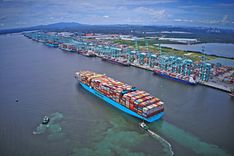The Cybernetica Vessel Traffic Management Information System (VTMIS) enhances maritime security by improving navigation safety and efficiency. It provides maritime authorities with a comprehensive overview to monitor and manage vessel traffic, prevent incidents, protect lives at sea, and safeguard the marine environment.
Vessel Traffic Management Information System core components
Key features
- Data processing & integration
Automatic collection, processing and integration of data from various sensors, including radars, Automatic Identification Systems (AIS), closed-circuit television (CCTV), radio direction finders (RDF), and a weather station.
- Traffic image creation
Visualisation of vessels and their movements in the responsibility area. A consolidated display integrating radar, Automatic Identification System (AIS), and multi-sensor targets, along with historical trails, providing a comprehensive overview of all elements within a single system.
- Automatic target identification
The system facilitates automated detection of vessels, thereby enhancing situational awareness and decision-making processes, enabling prompt responses to potential threats or anomalies.
- Traffic management & planning
Managing traffic and the planning of vessel movements to prevent congestion and dangerous situations.
- Route management
An additional feature for vessel traffic management designated to ensure safety and efficiency of vessels navigation.
- Traffic and risk alerting
Provision of customisable real-time notifications and alerts to operators for managing vessel traffic, preventing collisions, and mitigating risks to ensure maritime safety.
- Decision support tools
Different tools that support decision-making, including Closest Point of Approach (CPA ), Time to Closest Point of Approach (TCPA), and Estimated Relative Bearing Line (ERBL) functions. Artificial Intelligence (AI)-supported decision making.
- Recording & replay
Synchronous recording and replay of traffic image, including sensor data, Automatic Identification System (AIS) and radar information, Very High Frequency (VHF) calls, and operator actions for instant replay.
- Information exchange
Exchange of information with other parties, i.e., port authorities, pilots, agents, customs, cargo terminals, other Vessel Traffic Service (VTS) centres, Maritime Rescue Coordination Centre (MRCC), and weather service.
- SAR module
Specialized sensors, communication devices and navigation tools combined.
Optional components
Cybernetica’s vessels and voyages databases.
Integration with Cybernetica’s radio communication systems.
Digital Selective Calling (DSC) messages visualisation.
Integration with radio positioning systems like Cybernetica Time Difference of Arrival (TDOA) or Radio Direction Finder (RDF).
Meteorological and hydrographical systems.
Closed-Circuit Television (CCTV)/Pan-Tilt-Zoom (PTZ) cameras, Electro-Optical System (EOS).




